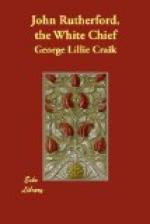The method of fighting, which is described as being in use among the New Zealanders, in which, after the first onset, every man chooses his individual antagonist, and the field of battle presents merely the spectacle of a multitude of single combats, is the same which has, perhaps, everywhere prevailed, not only in the primitive wars of men, but up to a period of considerable refinement in the history of the military art.
The Greeks and Trojans, at the time of the siege of Troy, used both chariots and missiles; and yet it is evident from Homer that their battles and skirmishes usually resolved themselves in a great measure into a number of duels between heroes who seem to have sometimes paused by mutual consent to hold parley together, without at all minding the course of the general fight.
Exactly the same thing takes place in the battles of the American Indians, who are also possessed of bows and arrows. The New Zealanders have no weapons of this description, and, until their intercourse with Europeans had put muskets into their hands, were without any arms whatever by which one body could, by its combined strength, have made an impression upon another from a distance. Even the long spears which they sometimes used could evidently have been employed with effect only when each was directed with a particular aim. When two parties engaged, therefore, they necessarily always came to close combat, and every man singled out his adversary; a mode of fighting which was, besides, much more adapted to their tempers, and to the feelings of vehement animosity with which they came into the field, than any which would have kept them at a greater distance from each other.
The details of such personal conflicts amongst more refined nations always formed a principal ingredient in poetry and romance, from the times of Homer to those of Spenser. They are, indeed, always uninteresting and tiresome, although related with the highest descriptive power; and even in the splendid descriptions of Ariosto and Tasso there is something absolutely ludicrous in the minute representations of two champions in complete armour, hammering each other about with their maces like blacksmiths.
Still, the poets have clung to this love of individual prowess, wherever their subjects would admit of such descriptions; and, even to our own day, that habit which we derived from the times of chivalry, of describing personal bravery as the greatest of human virtues, is not altogether abandoned.
The realities of modern warfare are, however, very unfavourable to such stimulating representations. The military discipline in use among the more cultivated nations of antiquity, for example the Persians, the Macedonians, the Grecian states, and above all, the Romans, undoubtedly did much to give to their armies the power of united masses, controllable by one will, and not liable to be broken down and rendered comparatively inefficient by the irregular movements of individuals.




